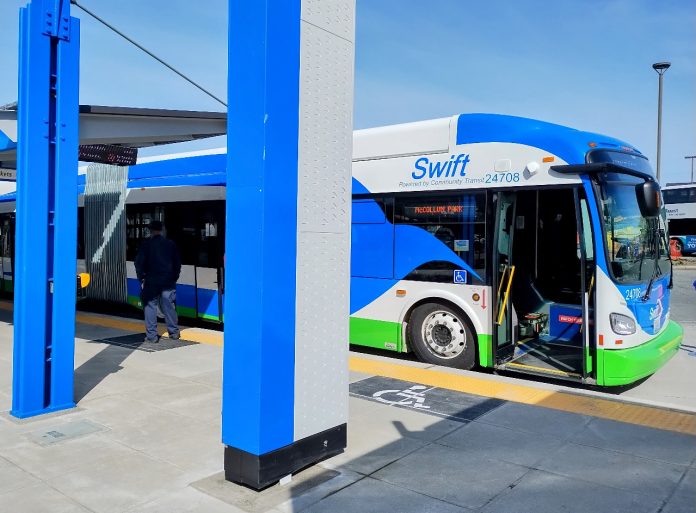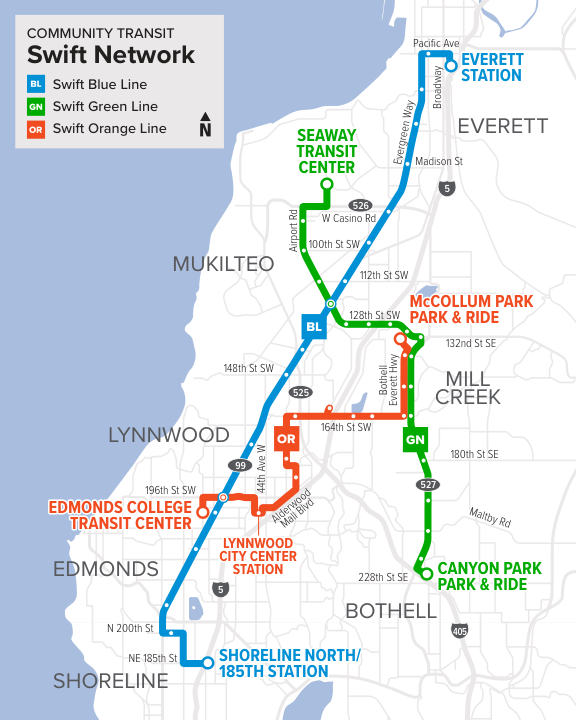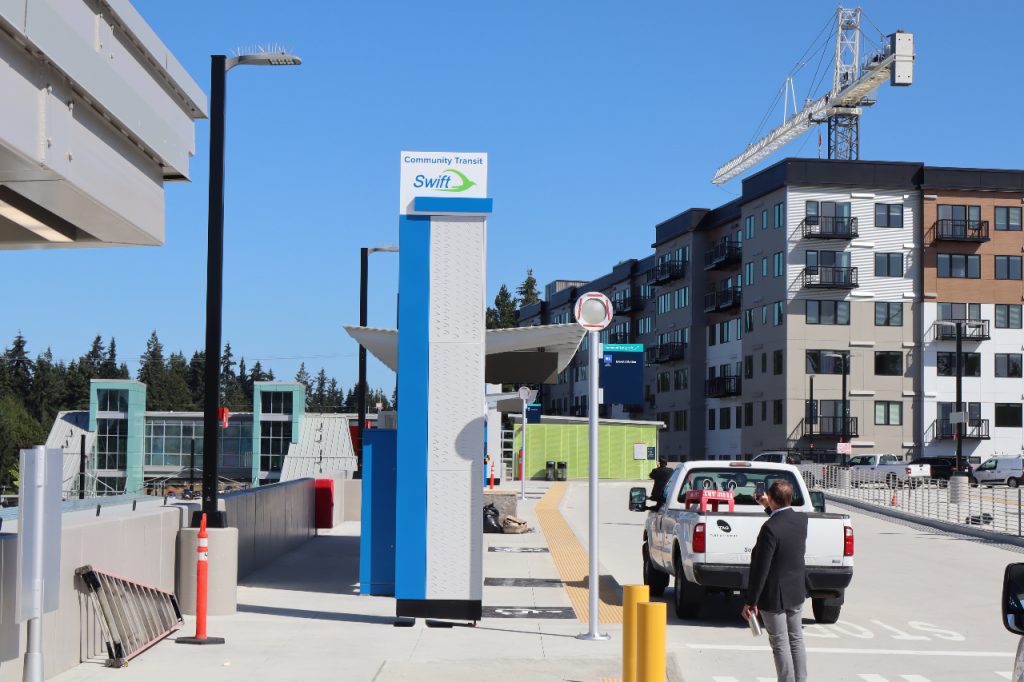
The extension of Sound Transit’s 1 Line into Snohomish County is already paying off for Community Transit and providing a ridership bump in its frequent transit network. Data from the weeks following the agency’s biggest service change in years shows significantly increased ridership on the entire Swift bus rapid transit (BRT) network, which includes the Blue, Green, and Orange Lines. That September 14 service change reoriented Community Transit’s entire bus network, discontinuing most service running all the way to Downtown Seattle, and instead focusing on more frequent service within Snohomish County.

Community Transit’s numbers show that over 82,000 people per week boarded a Swift bus across all three frequent routes, an increase of 10,400 compared to the month before the service change. That 14% jump is a clear product of the network effect in action, as frequent rail service to Shoreline, Mountlake Terrace, and Lynnwood enables riders to make easier connections than possible before. With 10-minute service throughout most of the day on the Swift network, the frequent buses extend Lynnwood Link’s reach further into Snohomish County.
“The ridership response has been terrific. Overall, the system is continuing to grow in terms of ridership, slowly and steadily,” Community Transit CEO Ric Ilgenfritz told the transit agency’s board last week. “We’ve seen a really strong response to the local network and the Swift system.”
These numbers also show some early evidence of the success of Lynnwood Link itself, as transit advocates await Sound Transit’s release of ridership data for the first month of the light rail extension, expected in the coming weeks.

The Swift Orange Line, the agency’s newest Swift route that launched this past March, saw the most significant ridership gains in the two weeks following the service change, with 36% more riders compared to August. The Orange Line includes a stop at Lynnwood City Center Station, providing east-west service that connects riders with Edmonds College, Alderwood Mall, Mill Creek, and McCollum Park and Ride in South Everett. After the line connected to light rail, 18,400 riders per week boarded the Orange Line, compared to 13,500 prior.
The Swift Blue Line, by far Community Transit’s most heavily used Swift route, saw a 7% increase in riders. Given its greater ridership baseline, that 7% increase equaled over half of the ridership increase seen on Swift Orange in sheer volume. A workhorse route running between Everett and Shoreline along State Route 99, the Blue Line had its southern terminus extended on September 14 from Aurora Transit Center to Shoreline’s northern light rail station at N 185th Street, enabling both easier connections to the region’s frequent transit network and serving one of the region’s fastest-growing residential neighborhoods.

Even the Green Line, which runs between northern Bothell and Seaway Transit Center in Everett but doesn’t directly connect with any Link station, saw a 14% increase in weekly ridership. It saw 2,500 more weekly riders over the second half of September compared to August. The Green Line is also set to be extended to serve Downtown Bothell and UW Bothell, connecting to Sound Transit’s future Stride S3 BRT line, but not until 2028 at the earliest.
Meanwhile, ridership on Community Transit’s peak-hour focused routes, the 900-series lines that connect directly with Lynnwood, Mountlake Terrace or Seaway but only run a few times a day, Ilgenfritz told the board, were down over 70% in ridership compared to before the launch of Lynnwood Link. That usage data suggests riders prefer frequent service over an infrequent but direct connection.
“Making this big shift from a commuter-based network to a local network is seeming to have paid off, in the near-term,” Ilgenfritz said.
With over 6.6 million rides on Community Transit buses last year, the agency doesn’t show any signs of slowing down. CT’s Transit Development Plan calls for a 42% increase in service levels between 2024 and 2029, a majority of which will be invested in the local all-day network and the Swift network, which is set to include a new Gold Line to Arlington by 2029. Many routes that are currently hourly are set to double in frequency, with only a few brand new routes planned.
With Sound Transit handling the lion’s share of trips to Seattle, Community Transit is poised to take full advantage of the opportunity to evolve into an all-day transit agency, with the early numbers on the Swift network indicating the gains that will provide for riders.
Ryan Packer has been writing for The Urbanist since 2015, and currently reports full-time as Contributing Editor. Their beats are transportation, land use, public space, traffic safety, and obscure community meetings. Packer has also reported for other regional outlets including BikePortland, Seattle Met, and PubliCola. They live in the Capitol Hill neighborhood of Seattle.


